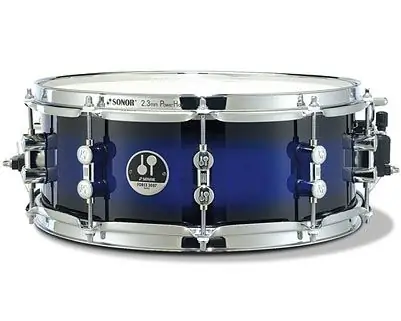Not a single full-fledged drum kit in a musical group is complete without a snare drum, which gives a unique and bright sound that gives a special color to the overall sound of the rhythm section. Like any other instrument, the snare drum occasionally requires replacement of component materials - in this case, the strings act as such materials, which give the drum a characteristic rattling sound. We will tell you how to change the strings in this article.

Instructions
Step 1
Take a block with strings and a cord threaded through one of its ends, pull both ends into the slot in the rim, and then tie it around the shank of the screws on the drum shell.
Step 2
Tighten the screw as far as it will go by turning it clockwise until the string slide is in the up position. Turn the screw back five turns to adjust the drum later.
Step 3
Lower the slide arm and wrap the ends of the cord around the slide screws, and then gradually lift the arm upward, finally pressing it against the vertical piece. The lever should move slowly, but freely enough, without strong resistance to your actions.
Step 4
In the upright position, the lever should snap into place - if you feel that it cannot reach the desired position, slightly loosen the tensioning screws. The tension of the screws should be such that the lever snaps into place easily and without force.
Step 5
Loose strings can be tightened by tightening the tension screws until a clear drum sound is heard.
On the second side of the drum, set the second end of the strings in the same way as described above. Both levers should be in the pressed and latched position, with the strings lying exactly in the middle of the drum.
Step 6
Make sure that their arrangement is symmetrical, and the holders are located exactly parallel to each other - this affects the clarity of the future sound. To maintain symmetry in the string tension, try to tension the lashing cords equally on all sides.
Step 7
If the cords are not stretched evenly, slightly loosen the tensioning screws and align the position of the cords by pulling up the free edge. You can also tighten the cord using a screwdriver to lift the longer end of the cord and pull it to the short side.






